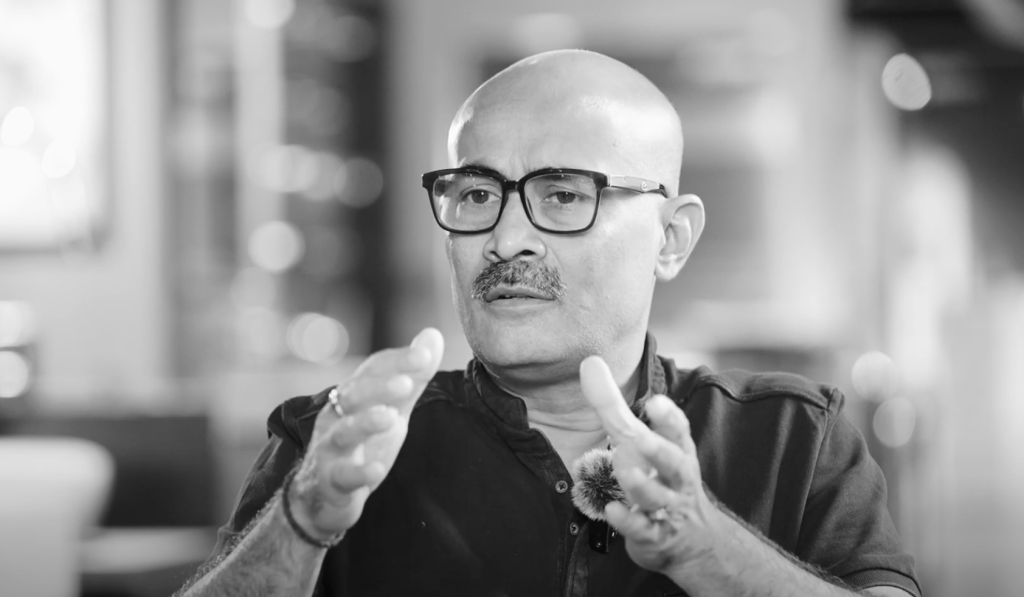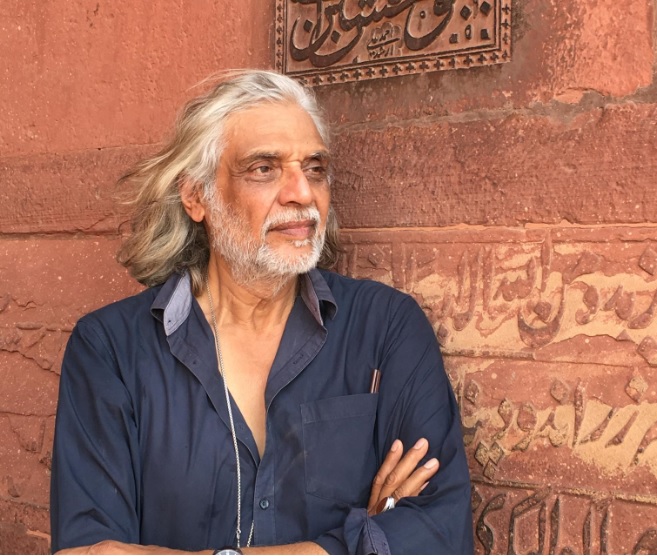Welcome to Samvaad, where art meets conversation, and inspiration knows no bounds. Here we engage in insightful conversations with eminent personalities from the art fraternity. Through Samvaad, Abir Pothi aims to create a platform for thought-provoking discussions, providing readers with an exclusive glimpse into the creative processes, inspirations, and experiences of these creative individuals. From curating groundbreaking exhibitions to pushing the boundaries of artistic expression, our interviews shed light on the diverse perspectives and contributions of these art luminaries. Samvaad is your ticket to connect with the visionaries who breathe life into the art world, offering unique insights and behind-the-scenes glimpses into their fascinating journeys.
People like Mr. Pinaki Bhattacharjee serve as guiding lights in the dynamic field of architecture, where creativity and functionality, tradition and contemporary, meet. Mr. Bhattacharjee has over twenty years of experience influencing Guwahati’s architectural scene. He is a source of knowledge on the complex interplay among urban growth, cultural legacy, and environmental sustainability. Mr. Nidheesh Tyagi from Abir Pothi will be joining us in this insightful debate. His deep interest in the nexus between art and architecture brings a special viewpoint to our discourse. We explore Mr. Bhattacharya’s insights, viewpoints, and insightful observations on the history, current state, and future of architecture in the area together. Mr. Bhattacharjee’s words offer priceless lessons for aspiring architects, artists, and fans alike, covering everything from the union of history and innovation to the challenges of urbanisation and the requirement of ecological balance. Come along with us as we take a tour of Guwahati’s architectural landscape led by one of its most renowned practitioners, Mr Pinaki Bhattacharjee.
Nidheesh: Hello, I’m Nidheesh Tyagi from Air Pothi. Welcome to this special edition of Abir Samvaad happening in Guwahati at the Jaquar Orientation Center. For this very special edition of Samvaad at Jaquar, we have a very special guest, Mr. Pinaki Bhattacharjee. He’s an architect practising in Guwahati for the last about 30 years. He’s a graduate of Trichi. Today, we are going to talk to him about the region, his practice, and his worldview from Guwahati about architecture, aesthetics, art, and design.
Welcome, Mr. Bhattacharji.
PB: Thank you so much.
Nidheesh: So, let’s begin with your journey. Could you run us through it, perhaps starting with where you are now and then working backwards?
PB: So, it’s been almost 20 to 25 years that I’ve been practising architecture here in this part of the country. Ever since I graduated, which was in 1994 from Regional Engineering College, now it’s NIT, there has been a mandatory six-month training period during the curriculum if you’re familiar with the architecture program. I did my training here in Guwahati, and even after graduating, I joined the same firm where I did my training. I practised there for about 3 to 4 years with a senior architect before I started setting up my practice. I have a partner in the firm, Anjay Gupta. He is also from the same college, just one-year junior to me. And yes, we have been practising together ever since.
Nidheesh: Can you tell us about the projects you’ve done that you think represent your journey so far or serve as a sort of big-ticket calling card?
PB: In a way, I can say that we were lucky when we started our practice here in Guwahati. Perhaps the sense and the requirement of architecture and architectural practice started picking up then. So, we were fortunate enough to begin receiving projects from the start. Believe me, there’s a significant need for housing, and it’s not unique to this part of the country; it’s all over India. Therefore, most of our work revolves around housing projects. Not to say we haven’t done other commercial projects; we have been associated with some hospital projects as well. However, there’s a bit of inclination, as far as I am concerned, towards the hospitality industry. So, that’s one area where, if I get better opportunities, I’d like to explore more.
Nidheesh: How have the houses in tier two and tier three cities, particularly in the middle-class service economies capital cities like Guwahati or Bhopal, evolved over the last 25 years since you’ve been practising, and even before that when you were studying architecture? How do you see the evolution of housing in these cities?
PB: There are a few features that I would like to stress when discussing this subject. When I started practising, and even since my birth, what I have been seeing around the city is very low-rise Assam-type housing, which we generally call high-pitched roofs with CGI sheet roofing. This was what we were used to seeing, with larger plot areas. Gradually, over some time, the housing requirements started increasing within the same city limits. We were required to accommodate more people because the infrastructure spreading the infrastructure of a city is a huge requirement. So, the requirement for housing grew, and so did the other activity areas. The housing requirement called for multi-level housing. Now, this multi-level housing is something that I have seen growing in front of my eyes from single-story to two-story buildings to suddenly now going to 15, 20, and even beyond. Another important feature that I would like to talk about is the spending capacity or the affordability of the people, which has increased. Therefore, because when we go high in such a region with seismic zone five, you must spend a lot on steel. It’s a very steel-intensive construction, and the cost of steel is very high. Therefore, the cost of construction will also go high. Therefore, the affordability of the people is very important. Apart from that, what we used to see in olden times was bigger plots with small houses, with a huge foreground and a huge backyard. So, those things are gradually losing because in these tier two, and tier three cities, what is happening is the next generation is migrating either to bigger cities or even abroad. What is left are the old generations with the small, I mean with these huge properties which they are unable to maintain. So, generally, they hand it over to promoters, keep a small part for themselves, and the rest is on sale. That is how we have seen housing growing.
Nidheesh: How smooth is the transition from the old bungalow and larger spaces to selling it and making it into a multi-story developer kind of house?
PB: It’s very hard on the persons who are actually giving away these plots, seeing their houses being destroyed to create such high-rise constructions. But it’s the need of the hour. They cannot maintain it.





